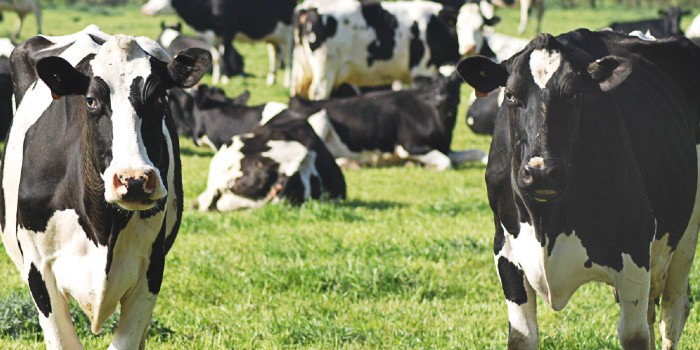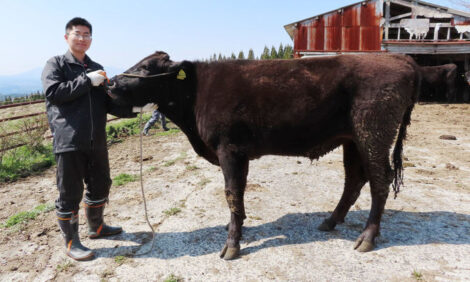



Biofilters to reduce climate impact from dairy cows and pigs
Biofilters that break down methane can be an important step towards cost-effective reduction of the climate footprint of Danish dairy cows and pig production
Total methane emissions from Denmark’s approximately 570,000 dairy cows today amount to 2.3 million tonnes of CO2 equivalents annually from the dairy cows’ barns and slurry containers. Likewise, the total pig production results in methane emissions equal to 1.45 million tonnes of CO2 equivalents per year. A new GUPD-funded project—Biomet—intends to address this problem. DTU, SEGES, COWI, PFH Miljø & Anlæg, and the University of Copenhagen will demonstrate the potential of biofilters as an important and cost-effective technological solution for the reduction of the big climate culprit—methane gas—which forms in the stomachs of the livestock and is emitted via their exhalation air and slurry.
The expectation for the project is that the total emissions from dairy cows’ barns and slurry containers in Denmark can be reduced by as much as 20 per cent, while the reduced climate impact from pig slurry is expected to be 15 per cent. Important secondary gains are also expected, as filtration of the air in cow barns and slurry containers in the biofilter will concurrently reduce emissions of ammonia and odour nuisances.
In specific terms, the parties will develop, design, and test biofilter systems. The filter consists of compost filled with methane-eating bacteria. The compost is placed in large containers or buried in the ground outside the barn. So-called ‘point extraction’ is also established over the dairy cows’ stalls, and—via ventilation pipes—the methane-containing air is sucked out of the barn and through the filter outside the barn. Here, the methane is reduced to carbon dioxide and water. The same process is intended to be used in the covered dairy cow and pig slurry containers, where the concentrated methane air over the slurry is sucked out and channelled into the biofilter.
The goal is full-scale test systems in 2021
The technology is already known, as it has been developed to convert methane from old landfills. At DTU, the technology has been used for nearly 15 years, while COWI has similar experience with biofilters from several years of advisory services in the establishment of biofilters in landfills. In the current project, the task will thus be to transfer the technology to cow barns and slurry containers under different conditions.
Biomet is managed by DTU and headed by Professor Charlotte Scheutz from DTU Environment. She says: “At DTU, we’ve long worked with technologies for breaking down methane using biofilters. It’s an effective method that has—for example—proved its worth in old landfills with methane emissions. Biofilters can also make a big difference at farms when they are customised for such use.”
DTU and SEGES have performed measurements in laboratories and small pilot systems, but full-scale test systems are required to measure the full effect of the technology. The goal is therefore to develop functional full-scale test systems with point extraction and biofilter in 2021 which work in practice and effectively reduce methane and ammonia contents in barn environments and slurry containers. The final version of the filter is expected to be ready by the end of 2022.
Another important focus in the project is to perform specific calculations of the cost of the method per reduced tonne of CO2 equivalent and tonne of ammonia. The parties’ initial expectations are that the biofilters will prove to be a cost-effective solution relative to their value, as the method is fairly simple and based on known technology with comparatively low establishment and maintenance costs.
Arla and Danish Crown are showing great interest in the potential of the project and will contribute support and knowledge. Based on the project results, the two parties will also calculate how large climate gas reductions the two industries can each achieve if their suppliers use the biofilters.


